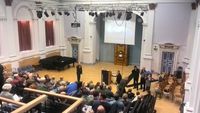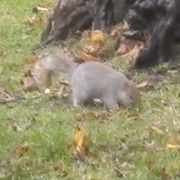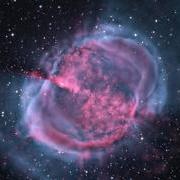Welcome to the WDAS monthly newsletter for December 2014: a digest of the month's latest contributions to our website. Below you'll find Society News, Sky Notes and In-Focus articles printed in full. There's also future events, and trailers for other articles which appear in full on the website - just a click away!
On the website you'll also be able to comment on articles, and if you'd like to play an editorial role in creating new content, just let us know!
If you don't see images in this e-mail, look for a setting in your browser or e-mail reader to display them; and if you have any other problems reading the newsletter please let us know the browser or e-mail program you're using, and we'll see if we can fix it.
Society News
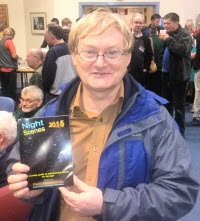 We caught up with Paul Money at Astromeet, and now have in our possession 20 copies of Night Scenes 2015... and it’s fair to say there’s quite a lot to look forward to next year.
We caught up with Paul Money at Astromeet, and now have in our possession 20 copies of Night Scenes 2015... and it’s fair to say there’s quite a lot to look forward to next year.
So for an in depth preview of celestial events next year reserve your copy now. First come, first serve, as usual, Booklets are priced at £4 for members and £6 for non members.
 You have the snazzy new-style newsletter; and now here comes ther reminder to WDAS Members about subscriptions for 2015, which are now due for renewal and will be held at the current inflation-busting levels as last year.
You have the snazzy new-style newsletter; and now here comes ther reminder to WDAS Members about subscriptions for 2015, which are now due for renewal and will be held at the current inflation-busting levels as last year.
So subs for the full year are just:
- £12 for Adults
- £5 for Under-16s
+ Night Scenes are £4 for members
You can bring subs along to the WDAS monthly meetings in December, January or February at the very latest.
If you cannot make the meetings, cheques are welcome. Please make them payable to;- Whitby & District Astronomical Society, and address them to Mark Dawson - 33 laburnum Grove, Whitby. YO21 1HZ.
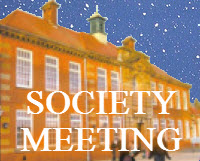 Don't forget the December 2014 WDAS meeting.
Don't forget the December 2014 WDAS meeting.
This month:
 Mark gives us an in-depth look at hot star cluster The Pleiades
Mark gives us an in-depth look at hot star cluster The Pleiades-
 Andi gives an update of Astro-News, including the Rosetta/Philae mission so far - with 3D images and animations, no less! (3D glasses supplied)
Andi gives an update of Astro-News, including the Rosetta/Philae mission so far - with 3D images and animations, no less! (3D glasses supplied) -
 As well as a tour of the Christmas sky, now, and then;
As well as a tour of the Christmas sky, now, and then;
and Society business for December.
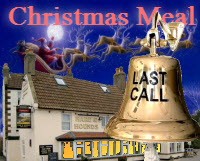 If you still wish to come along to the Christmas Meal (and we believe there are a few who do) please let Mark know before December 4th, along with your menu choices.
If you still wish to come along to the Christmas Meal (and we believe there are a few who do) please let Mark know before December 4th, along with your menu choices.
As of going to press there are 10 confirmed for the Christmas meal: Andi, Andy L, Ian D, John T and Sue, Mark, Keith, Phil, Rosemary and Victor (all with menu choices).
The date is Dec 12th for around 7:15pm. It has been provisionally booked for up to fifteen. We shall sort out transport ideas at the December monthly meeting.
Preparing to start the lecture "When
Galaxies Collide" (Click image for full
-size view, and try to spot Lee, Keith
and John. Where's Mark? Probably
buying lenses or raffle tickes!)
At one point it could have run to three cars, but in the end five WDAS members made the journey over to Leeds squeezing into just one - Andi's car - for Astromeet 2014.
The slightly 'quicker detour route' around Pickering proved 'deer-less' this year, much to our disappointment and arrival at Leeds university was bang on 09:40h - as per usual.
Mark signed everyone in: Andi, John L, Keith and Lee and we headed for the venue rooms to quickly peruse the trade stalls and meet up with Mike (Marks mate). Mark was first to snap up a Barlow lens and 32mm plossle eyepiece, before purchasing another Barlow lens and 26mm Plossle eyepiece. Had he gone mad? (Well, some would argue....) Aahh no, just a shopping list for other people. And they got change as well!
Inside, Alan's talk on Edmond Halley;
while just outside, a squirrel prepares
for the Winter Solstice.
After are usual foray over to the Leeds Univ refectory complex for a spot of lunch, we made contact with Paul Money who had come up to Leeds for the afternoon lectures and to exchange copies of Night Scenes with various society representatives or individuals. Transactions completed it was time for the afternoon session. The raffle draw was conducted before Alan Chapman’s talk (as is customary) but for once WDAS members were left empty handed - frustratingly just a number out either way on several accounts.
Keep reading for the first of Mark's notes on the lectures...
In the News
The European Space Agency (ESA) has released three short videos about the Rosetta Mission: one focusing on the scientific objectives, another updating their mission summary, and this one - the latest in the children's animations, tells the story of the Philae lander preparing to descend to the surface of Comet 67P Churyumov-Gerasimenko.
See the full article for all three videos, and don't forget the landing itself on the 12th of November.
It was a day full of excitement and trepidation, as the drama of the Philae Lander's despatch from the Rosetta's satellite took place, and Philae drifted in super-weak gravity towards the surface on a 7-hour journey to Comet 67P/Churyumov-Gerasimenko.
It was a day which almost didn't happen, as overnight preparations revealed a malfunction in the thruster which was to press Philae to the ground immediately on landing while harpoons tethered it to the comet surface were fired. But the decision was taken to go ahead, and at about 08:30h GMT Philae successfully separated from Rosetta and began its descent.
The landing was confirmed at around 16:05h GMT and verified a few minutes later. But all was not as it seemed...
His lecture to Astromeet was ‘The formation of planetary nebulae’.
M27: Dumbell Nebula
First Planetary Nebula discovered
by Charles Messier in 1764
(Click image for full-size view)
A very apt, timely lecture, given that it’s the 250th anniversary of the first recorded observation of a planetary nebula by Charles Messier – M27; the Dumbbell nebula, and as Albert noted, even then the view would be different to how it looks today, such is the evolution of these beautiful objects.
The term ‘Planetary nebula’ was actually coined by William Herschel, discoverer of Uranus. Through telescopes of the day planetary nebulae somewhat resembled the giant planets like Uranus, At first Herschel thought the objects were stars surrounded by material that was condensing into planets rather than what is known to be evidence of dead stars that have incinerated any orbiting planets!.
The true nature of planetary nebulae was unknown until the first spectroscopic observations were made in the mid-19th century. Planetary nebulae came to be understood as a final stage of stellar evolution. Spectroscopic observations show that all planetary nebulae are expanding. This led to the idea that planetary nebulae were caused by a star's outer layers being thrown into space at the end of its life...
 In time honoured fashion the final lecture was delivered by Dr Alan Chapman. His subject this year was Edmond Halley, and as we soon learned Halley was not just an exceptional astronomer, his experiments, observations and research extended into many varied fields of science and professions, including fledgling scientific concepts and ideas.
In time honoured fashion the final lecture was delivered by Dr Alan Chapman. His subject this year was Edmond Halley, and as we soon learned Halley was not just an exceptional astronomer, his experiments, observations and research extended into many varied fields of science and professions, including fledgling scientific concepts and ideas.
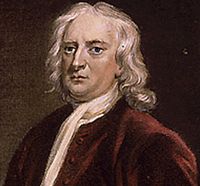 Halley was born in Shoreditch on the 8th November 1656. His father, Edmond Halley Sr. came from a Derbyshire family and was a wealthy soap-maker in London. Apart from the soap business, the Halley’s had plenty of properties in London. Even though, they lost some of their assets during the 'Great Fire of London' in 1666, it hardly affected their financial status; as Alan stated; ‘they were quite well off’.
Halley was born in Shoreditch on the 8th November 1656. His father, Edmond Halley Sr. came from a Derbyshire family and was a wealthy soap-maker in London. Apart from the soap business, the Halley’s had plenty of properties in London. Even though, they lost some of their assets during the 'Great Fire of London' in 1666, it hardly affected their financial status; as Alan stated; ‘they were quite well off’.
As a child Halley was very interested in mathematics and received private tuitions at home till he was admitted to St. Pauls School where he excelled in everything he did and became the captain of the school at the age of just 15. His father had already kitted out Edmond with all the necessary astronomical equipment required and in 1673 Halley went to Queens College;Oxford and whilst an undergraduate, he published papers on the Solar System and sunspots. However, he left the college in 1675 without completing his degree and started working for John Flamsteed who was the ‘Astronomer Royal’ at the Greenwich Observatory. Among other things, Halley had the job of assigning what is now called Flamsteed numbers to stars. ‘Halley was starting to make a name for himself’...

